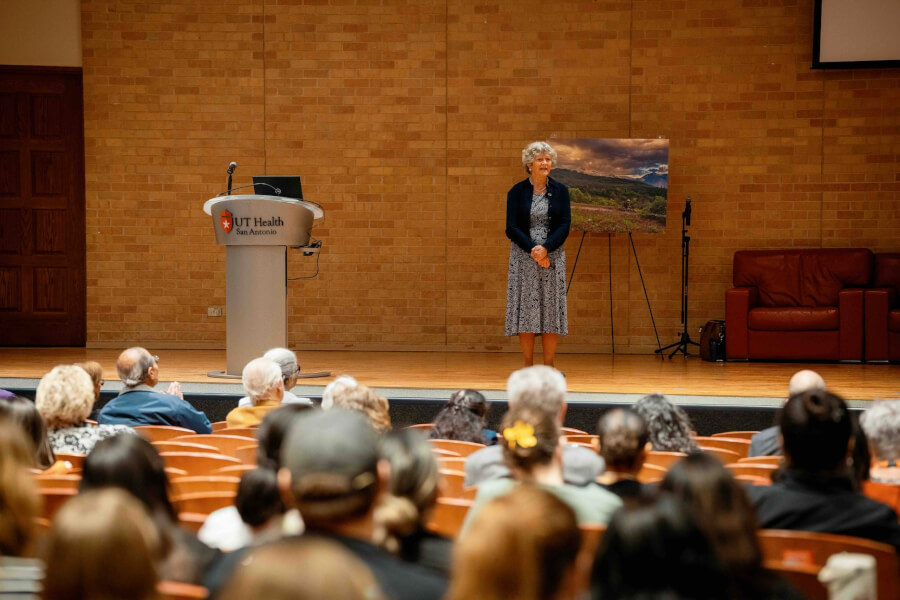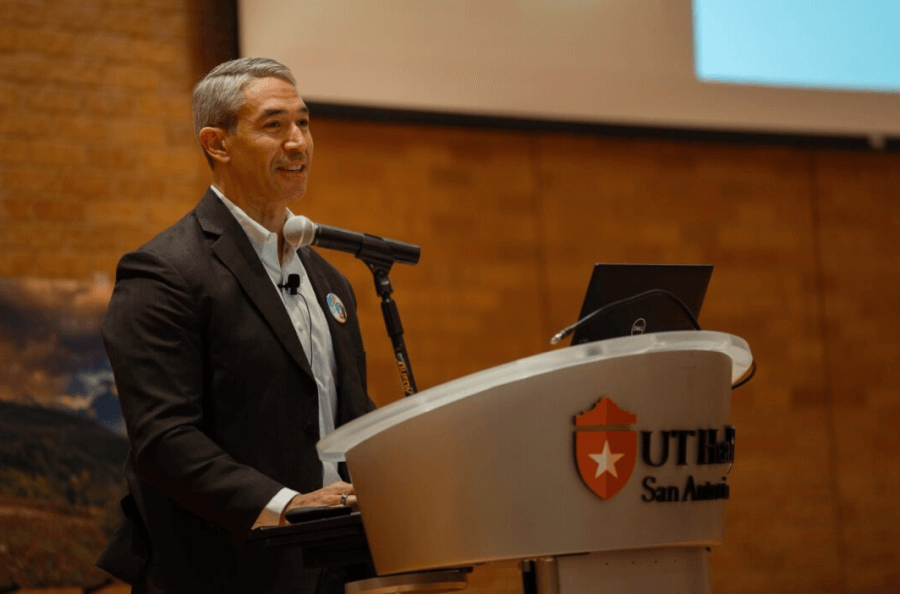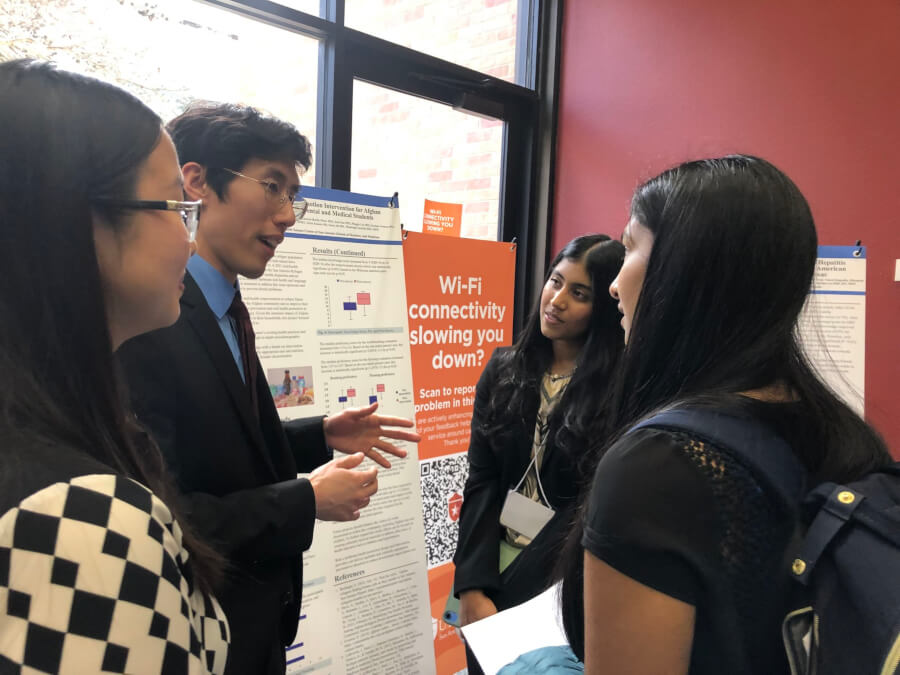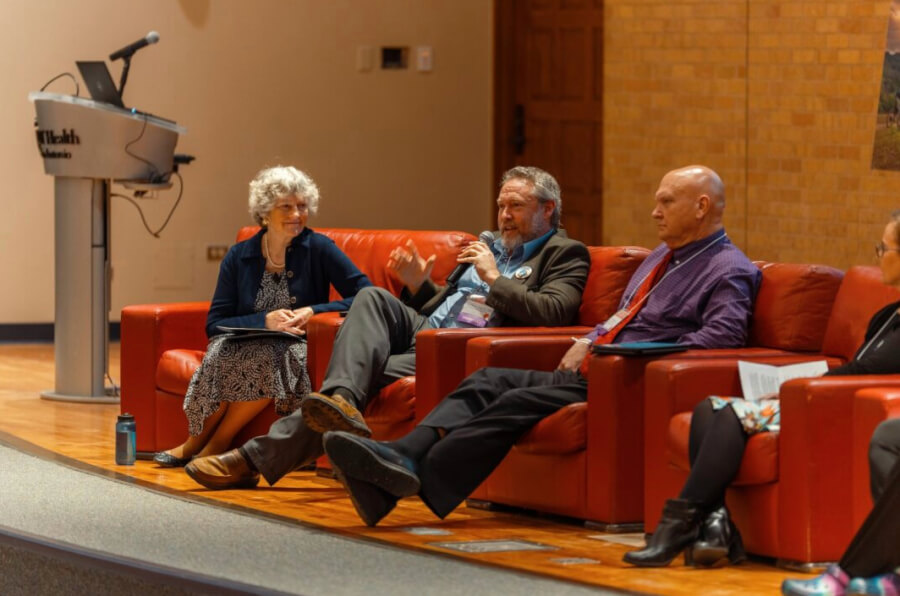The Charles E. Cheever Jr. Center for Medical Humanities and Ethics held its 17th annual Community Service Learning Conference on February 3 with the theme “One Planet.” One Health. We are all connected. ”

“Our planning committee selects a theme each year based on the pulse of what is important in the community,” says Melanie Stone, Ph.D., MD. “In other words, what problems are our community partners facing with their clients? And what needs are we addressing in health care?”
Stone is director of the Cheever Center's Community Service Learning Department and assistant professor of family and community medicine at the University of Texas Health Science Center at the Joe R. and Teresa Lozano Long School of Medicine in San Antonio.
“The focus on global health has been around for several years, but pressing challenges such as natural disasters, climate change and mental health made it a priority this year,” Stone said.
Dr. Teddy M. Potter, RN, FAAN, FNAP, Clinical Professor, Director of Planetary Health
The University of Minnesota School of Nursing was invited as a keynote speaker at the conference, sharing information about the relationship between global health and human health.
sense of urgency
Potter, a Minnesota native, shared personal observations about environmental changes over the years, from the thinning of ice on once-frozen rivers to changing migration patterns of robins. In his reflections, Potter pointed to changes that Texans will continue to experience, according to the Texas 2036 report.

“We're seeing more severe weather, significantly more urban flooding, more intense hurricanes, more 100-degree days, and more droughts,” Potter said. “Think about the homes, businesses, and main streets that have been damaged and the families who are moving because of it. Think about the hospitals and clinics that are in those spaces. How are you prepared?”
The United Nations considers these events to be signs of a triple planetary crisis. This crisis consists of three major, interconnected problems currently facing humanity: climate change, pollution, and biodiversity loss. “These environmental changes have serious implications for human health, putting decades of public health gains at risk,” Potter said.
According to the Planetary Health Alliance, environmental changes impact cardiovascular and respiratory diseases, infectious diseases, antimicrobial resistance, heat stroke, malnutrition, mental health, and more.
“This should create a sense of alarm for medical professionals,” Potter said. “It doesn't matter what specialty you work in, you're helping our people survive what's coming.”
great transition period
It is through holistic, multidisciplinary approaches such as Planetary Health, One Health, and EcoHealth that Potter finds hope. Each method aims to protect the health of humans, animals, and environmental systems.
“We've all had a hand in this, but the good news is we can all be part of the solution. Here's where it gets tough,” Potter said.

The healthcare sector impacts climate change. As the National Academy of Medicine points out, in the United States, health care accounts for nearly 20 percent of the gross domestic product and is a significant consumer of resources and emitter of waste and greenhouse gases.
The United States ranks among the world's leading carbon emitters, accounting for a quarter of global emissions from the healthcare sector. This proportion is the highest compared to all other global health sectors. These emissions come from a variety of sources within healthcare, including facility operations, heating and cooling, and supply chains related to healthcare services and products.
“Health professionals need to play an active role in shaping a more sustainable future,” Potter said. “We need to be careful and make decisions based on how it will affect seven future generations.”
sustainability in san antonio
Special guest speaker and San Antonio Mayor Ron Nirenberg said the city has first-hand experience making difficult sustainability decisions.
“San Antonio is one of the fastest growing municipalities in the nation,” Nirenberg said. From 2021 to 2022, San Antonio added 18,000 residents. Sustainability is something we have to consider. ”
Nirenberg said conservation remains critical to providing adequate energy, water and transportation for growing city dwellers, but efforts that are working have already proven successful. He said that
San Antonio is the largest producer of solar energy in Texas and the fifth largest in the nation, according to a report by the Center for Environmental American Research and Policy.
The mayor said San Antonio will phase out the use of coal for energy generation by 2028, more than 35 years earlier than originally planned.

“The amount of energy that will need to be produced to meet the demands of the coming years is staggering. So where that generation comes from is critical to our future. Our plans will add more than 4,900 megawatts of power generation capacity, including wind, solar and battery storage,” Nirenberg said.
In addition to clean energy, San Antonio's public energy utility has weatherized 30,000 income-eligible homes over the past 10 years through its Casa Verde program, which provides energy savings and rebates for a sustainable tomorrow, Nirenberg said. It added that it has generated more than $553 million in bill savings through its energy plans. program.
The city is also working with the San Antonio Water System to meet growing water demands through the Vista Ridge Pipeline Project, the “largest non-Edwards aquifer” water delivery project in the San Antonio Water System's history. It is stated on the website that it is.
San Antonio aims to alleviate urban heat island, launches electric vehicle charging incentive program, requires new homes to be solar-powered, promises faster, more efficient, lower-cost travel options Preparations are underway for a new high-speed mass transit line. .
“If we are to create a sustainable planet, a sustainable San Antonio, we need to recognize that everyone needs access to these opportunities. It can have the biggest impact on the people who can least afford it, so we're going to change the way we think and work together on more systemic responses. We've done that very well in San Antonio. ” he said.
Services in operation
Students participating in community service learning (CSL) similarly work together to identify and develop innovative projects that address pressing health needs of surrounding community members, Stone said. .
An average of 1,400 students participate in CSL projects annually, logging 20,000 service hours and benefiting approximately 10,000 community members.
“CSL students are mentored by physicians and other health care professionals from the community-oriented UT Health San Antonio faculty. More than 60 community organizations partner with us each year to provide free, high-quality health care for their clients. They receive services and education,” she said.
The annual event featured 70 student project posters divided into categories including advocacy and policy, capacity development, clinical services, education, and advocacy.
A group of medical and dental students, guided by Dr. Moshtag Faroqi, DDS, MPH, aims to improve women's well-being and empower Afghan refugee women through disease prevention and oral health promotion. I cooperated with the project.

While volunteering at the San Antonio Refugee Health Clinic, students provided oral health education and created health instruction videos in Pashto on culturally appropriate oral health and nutrition.
“This project was shocking to me both personally and professionally because people tend to think they already know this information, but they actually don't,” said second-year dental student Hamsini Nathan. Ta.
“Oral health is tied to overall health,” says second-year medical student James Yang. “This experience taught us a lot about community and culture. This is the real world.”
Summarizing the results of their group's project, Nathan and Yang announced that program participants significantly improved their oral hygiene and healthy eating habits, as well as their toothbrushing proficiency.
“For the past 17 years, the CSL conference, the only one of its kind among Texas health science centers, has emphasized the important role community service learning plays in our health care system,” Stone said. “This is an opportunity to discuss cutting-edge ideas and practical solutions, and to showcase the human-centered work of our students and faculty. What makes this conference unique is that it brings together public health, social work, and medical professionals. and share our expertise and experience with the goal of working together to provide compassionate, innovative and high-quality health care to our communities.”
For more information about this year's conference and community service learning, visit the Charles E. Cheever Jr. Center for Medical Humanities and Ethics website.


